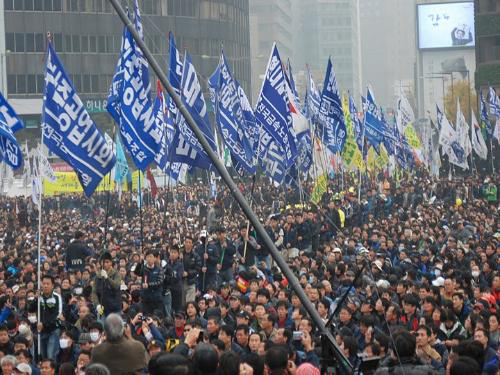3.1: Chapter 3- Theoretical Perspectives
- Page ID
- 55292
\( \newcommand{\vecs}[1]{\overset { \scriptstyle \rightharpoonup} {\mathbf{#1}} } \)
\( \newcommand{\vecd}[1]{\overset{-\!-\!\rightharpoonup}{\vphantom{a}\smash {#1}}} \)
\( \newcommand{\id}{\mathrm{id}}\) \( \newcommand{\Span}{\mathrm{span}}\)
( \newcommand{\kernel}{\mathrm{null}\,}\) \( \newcommand{\range}{\mathrm{range}\,}\)
\( \newcommand{\RealPart}{\mathrm{Re}}\) \( \newcommand{\ImaginaryPart}{\mathrm{Im}}\)
\( \newcommand{\Argument}{\mathrm{Arg}}\) \( \newcommand{\norm}[1]{\| #1 \|}\)
\( \newcommand{\inner}[2]{\langle #1, #2 \rangle}\)
\( \newcommand{\Span}{\mathrm{span}}\)
\( \newcommand{\id}{\mathrm{id}}\)
\( \newcommand{\Span}{\mathrm{span}}\)
\( \newcommand{\kernel}{\mathrm{null}\,}\)
\( \newcommand{\range}{\mathrm{range}\,}\)
\( \newcommand{\RealPart}{\mathrm{Re}}\)
\( \newcommand{\ImaginaryPart}{\mathrm{Im}}\)
\( \newcommand{\Argument}{\mathrm{Arg}}\)
\( \newcommand{\norm}[1]{\| #1 \|}\)
\( \newcommand{\inner}[2]{\langle #1, #2 \rangle}\)
\( \newcommand{\Span}{\mathrm{span}}\) \( \newcommand{\AA}{\unicode[.8,0]{x212B}}\)
\( \newcommand{\vectorA}[1]{\vec{#1}} % arrow\)
\( \newcommand{\vectorAt}[1]{\vec{\text{#1}}} % arrow\)
\( \newcommand{\vectorB}[1]{\overset { \scriptstyle \rightharpoonup} {\mathbf{#1}} } \)
\( \newcommand{\vectorC}[1]{\textbf{#1}} \)
\( \newcommand{\vectorD}[1]{\overrightarrow{#1}} \)
\( \newcommand{\vectorDt}[1]{\overrightarrow{\text{#1}}} \)
\( \newcommand{\vectE}[1]{\overset{-\!-\!\rightharpoonup}{\vphantom{a}\smash{\mathbf {#1}}}} \)
\( \newcommand{\vecs}[1]{\overset { \scriptstyle \rightharpoonup} {\mathbf{#1}} } \)
\( \newcommand{\vecd}[1]{\overset{-\!-\!\rightharpoonup}{\vphantom{a}\smash {#1}}} \)
\(\newcommand{\avec}{\mathbf a}\) \(\newcommand{\bvec}{\mathbf b}\) \(\newcommand{\cvec}{\mathbf c}\) \(\newcommand{\dvec}{\mathbf d}\) \(\newcommand{\dtil}{\widetilde{\mathbf d}}\) \(\newcommand{\evec}{\mathbf e}\) \(\newcommand{\fvec}{\mathbf f}\) \(\newcommand{\nvec}{\mathbf n}\) \(\newcommand{\pvec}{\mathbf p}\) \(\newcommand{\qvec}{\mathbf q}\) \(\newcommand{\svec}{\mathbf s}\) \(\newcommand{\tvec}{\mathbf t}\) \(\newcommand{\uvec}{\mathbf u}\) \(\newcommand{\vvec}{\mathbf v}\) \(\newcommand{\wvec}{\mathbf w}\) \(\newcommand{\xvec}{\mathbf x}\) \(\newcommand{\yvec}{\mathbf y}\) \(\newcommand{\zvec}{\mathbf z}\) \(\newcommand{\rvec}{\mathbf r}\) \(\newcommand{\mvec}{\mathbf m}\) \(\newcommand{\zerovec}{\mathbf 0}\) \(\newcommand{\onevec}{\mathbf 1}\) \(\newcommand{\real}{\mathbb R}\) \(\newcommand{\twovec}[2]{\left[\begin{array}{r}#1 \\ #2 \end{array}\right]}\) \(\newcommand{\ctwovec}[2]{\left[\begin{array}{c}#1 \\ #2 \end{array}\right]}\) \(\newcommand{\threevec}[3]{\left[\begin{array}{r}#1 \\ #2 \\ #3 \end{array}\right]}\) \(\newcommand{\cthreevec}[3]{\left[\begin{array}{c}#1 \\ #2 \\ #3 \end{array}\right]}\) \(\newcommand{\fourvec}[4]{\left[\begin{array}{r}#1 \\ #2 \\ #3 \\ #4 \end{array}\right]}\) \(\newcommand{\cfourvec}[4]{\left[\begin{array}{c}#1 \\ #2 \\ #3 \\ #4 \end{array}\right]}\) \(\newcommand{\fivevec}[5]{\left[\begin{array}{r}#1 \\ #2 \\ #3 \\ #4 \\ #5 \\ \end{array}\right]}\) \(\newcommand{\cfivevec}[5]{\left[\begin{array}{c}#1 \\ #2 \\ #3 \\ #4 \\ #5 \\ \end{array}\right]}\) \(\newcommand{\mattwo}[4]{\left[\begin{array}{rr}#1 \amp #2 \\ #3 \amp #4 \\ \end{array}\right]}\) \(\newcommand{\laspan}[1]{\text{Span}\{#1\}}\) \(\newcommand{\bcal}{\cal B}\) \(\newcommand{\ccal}{\cal C}\) \(\newcommand{\scal}{\cal S}\) \(\newcommand{\wcal}{\cal W}\) \(\newcommand{\ecal}{\cal E}\) \(\newcommand{\coords}[2]{\left\{#1\right\}_{#2}}\) \(\newcommand{\gray}[1]{\color{gray}{#1}}\) \(\newcommand{\lgray}[1]{\color{lightgray}{#1}}\) \(\newcommand{\rank}{\operatorname{rank}}\) \(\newcommand{\row}{\text{Row}}\) \(\newcommand{\col}{\text{Col}}\) \(\renewcommand{\row}{\text{Row}}\) \(\newcommand{\nul}{\text{Nul}}\) \(\newcommand{\var}{\text{Var}}\) \(\newcommand{\corr}{\text{corr}}\) \(\newcommand{\len}[1]{\left|#1\right|}\) \(\newcommand{\bbar}{\overline{\bvec}}\) \(\newcommand{\bhat}{\widehat{\bvec}}\) \(\newcommand{\bperp}{\bvec^\perp}\) \(\newcommand{\xhat}{\widehat{\xvec}}\) \(\newcommand{\vhat}{\widehat{\vvec}}\) \(\newcommand{\uhat}{\widehat{\uvec}}\) \(\newcommand{\what}{\widehat{\wvec}}\) \(\newcommand{\Sighat}{\widehat{\Sigma}}\) \(\newcommand{\lt}{<}\) \(\newcommand{\gt}{>}\) \(\newcommand{\amp}{&}\) \(\definecolor{fillinmathshade}{gray}{0.9}\)Chapter 3 Learning Objectives
- Explain what sociological theories are and how they are used.
- Understand the similarities and differences between structural functionalism, conflict theory, and symbolic interactionism.

Sociologists study social events, interactions, and patterns, and they develop a theory in an attempt to explain why things work as they do. In sociology, a theory is a way to explain different aspects of social interactions and to create a testable proposition, called a hypothesis, about society (Allan 2006).
social solidarity, and hypothesized that differences in suicide rates might be explained by religion-based differences. Durkheim gathered a large amount of data about Europeans who had ended their lives, and he did indeed find differences based on religion. Protestants were more likely to commit suicide than Catholics in Durkheim’s society, and his work supports the utility of theory in sociological research.
| Sociological Paradigm | Level of Analysis | Focus |
|---|---|---|
| Structural Functionalism | Macro or mid | The way each part of society functions together to contribute to the whole |
| Conflict Theory | Macro | The way inequalities contribute to social differences and perpetuate differences in power |
| Symbolic Interactionism | Micro | One-to-one interactions and communications |
Functionalism
institutions, or patterns of beliefs and behaviors focused on meeting social needs, such as government, education, family, healthcare, religion, and the economy.
function of any recurrent activity as the part it played in social life as a whole, and therefore the contribution it makes to social stability and continuity (Radcliff-Brown 1952). In a healthy society, all parts work together to maintain stability, a state called dynamic equilibrium by later sociologists such as Parsons (1961).
functions are the unsought consequences of a social process. A manifest function of college education, for example, includes gaining knowledge, preparing for a career, and finding a good job that utilizes that education. The latent functions of your college years include meeting new people, participating in extracurricular activities, or even finding a spouse or partner. Another latent function of education is creating a hierarchy of employment based on the level of education attained. Latent functions can be beneficial, neutral, or harmful. Social processes that have undesirable consequences for the operation of society are called dysfunctions. In education, examples of dysfunction include getting bad grades, truancy, dropping out, not graduating, and not finding suitable employment.
Criticism
Global Culture?

Conflict Theory
Criticism
Farming and Locavores: How Sociological Perspectives Might View Food Consumption
Food Inc. depicts as resulting from Monsanto’s patenting of seed technology. Another topic of study might be how nutrition varies between different social classes.
Symbolic Interactionist Theory
dramaturgical analysis. Goffman used theater as an analogy for social interaction and recognized that people’s interactions showed patterns of cultural “scripts.” Because it can be unclear what part a person may play in a given situation, he or she has to improvise his or her role as the situation unfolds (Goffman 1958).
Criticism
Sociological Theory Today
End-of-Chapter Summary
References
Allan, Kenneth. 2006. Contemporary Social and Sociological Theory: Visualizing Social Worlds. Thousand Oaks, CA: Pine Forge Press.
Blumer, H. 1969. Symbolic Interactionism: Perspective and Method. Englewood Cliffs, NJ: Prentice Hall.
Broce, Gerald. 1973. History of Anthropology. Minneapolis: Burgess Publishing Company.
Calhoun, Craig J. 2002. Classical Sociological Theory. Malden, MA: Wiley-Blackwell.
Durkheim, Émile. 1984 [1893]. The Division of Labor in Society. New York: Free Press.
Durkheim, Émile. 1964 [1895]. The Rules of Sociological Method, edited by J. Mueller, E. George and E. Caitlin. 8th ed. Translated by S. Solovay. New York: Free Press.
Goffman, Erving. 1958. The Presentation of Self in Everyday Life. Edinburgh: University of Edinburgh, Social Sciences Research Centre.
Goldschmidt, Walter. 1996. “Functionalism” in Encyclopedia of Cultural Anthropology, Vol. 2, edited by D. Levinson and M. Ember. New York: Henry Holt and Company.
Henry, Stuart. 2007. “Deviance, Constructionist Perspectives.” Blackwell Encyclopedia of Sociology. Retrieved October 14, 2014 (http://www.sociologyencyclopedia.com...2433110_ss1-41).
Herman, Nancy J., and Larry T. Reynolds. 1994. Symbolic Interaction: An Introduction to Social Psychology. Lanham, MD: Altamira Press.
Horkeimer, M. 1982. Critical Theory. New York: Seabury Press.
Irving, John Scott. 2007. Fifty Key Sociologists: The Formative Theorists. New York: Routledge.
LaRossa, R., and D.C. Reitzes. 1993. “Symbolic Interactionism and Family Studies.” Pp. 135–163 in Sourcebook of Family Theories and Methods: A Contextual Approach, edited by P. G. Boss, W. J. Doherty, R. LaRossa, W. R. Schumm, and S. K. Steinmetz. New York: Springer.
Maryanski, Alexandra, and Jonathan Turner. 1992. The Social Cage: Human Nature and the Evolution of Society. Stanford, CA: Stanford University Press.
Marx, Karl and Friedrich Engels. 1998 [1848]. The Communist Manifesto. New York: Penguin.
Parsons, T. 1961. Theories of Society: Foundations of Modern Sociological Theory. New York: Free Press.
Pew Research Center. 2012. “Mobile Technology Fact Sheet.” Pew Research Internet Project, April 2012. Retrieved October 15, 2014 (http://www.pewinternet.org/fact-shee...gy-fact-sheet/).
Radcliffe-Brown, A.R. 1952. Structure and Function in Primitive Society: Essays and Addresses. London: Cohen and West.
Spencer, Herbert. 1898. The Principles of Biology. New York: D. Appleton and Company.
Turner, J. 2003. The Structure of Sociological Theory. 7th ed. Belmont, CA: Thompson/Wadsworth.
UCLA School of Public Affairs. n.d. “What is Critical Race Theory?” UCLA School of Public Affairs: Critical Race Studies. Retrieved October 20, 2014 (http://spacrs.wordpress.com/what-is-...l-race-theory/).
Attribution
Theoretical Perspectives by Rice University under the Creative Commons Attribution-NonCommercial 4.0 license.


